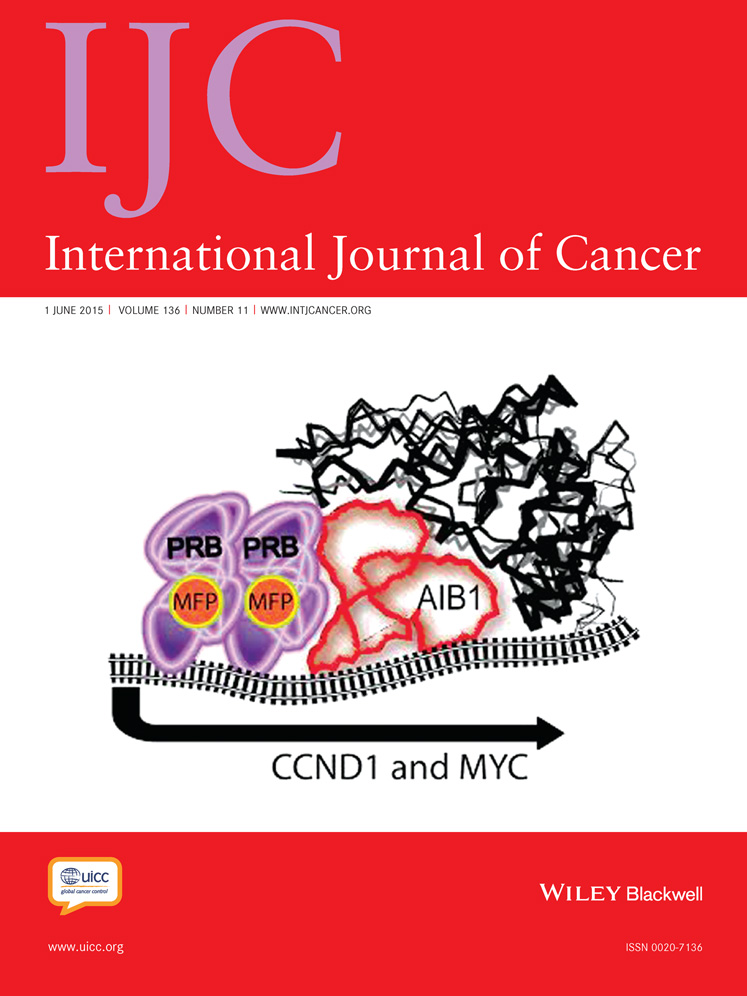Recent cancer survival in Germany: An analysis of common and less common cancers
Abstract
The monitoring of cancer survival by population-based cancer registries is a prerequisite to evaluate the current quality of cancer care. Our study provides 1-, 5- and 10-year relative survival as well as 5-year relative survival conditional on 1-year survival estimates and recent survival trends for Germany using data from 11 population-based cancer registries, covering around one-third of the German population. Period analysis was used to estimate relative survival for 24 common and 11 less common cancer sites for the period 2007–2010. The German and the United States survival estimates were compared using the Surveillance, Epidemiology and End Results 13 database. Trends in cancer survival in Germany between 2002–2004 and 2008–2010 were described. Five-year relative survival increased in Germany from 2002–2004 to 2008–2010 for most cancer sites. Among the 24 most common cancers, largest improvements were seen for multiple myeloma (8.0% units), non-Hodgkin lymphoma (6.2% units), prostate cancer (5.2% units) and colorectal cancer (4.6% units). In 2007–2010, the survival disadvantage in Germany compared to the United States was largest for cancers of the mouth/pharynx (−11.0% units), thyroid (−6.8% units) and prostate (−7.5% units). Although survival estimates were much lower for elderly patients in both countries, differences in age patterns were observed for some cancer sites. The reported improvements in cancer survival might reflect advances in the quality of cancer care on the population level as well as increased use of screening in Germany. The survival differences across countries and the survival disadvantage in the elderly require further investigation.
Abstract
What's new?
Population-based cancer registries allow researchers to evaluate current quality and recent trends in cancer care. In this study, the authors assembled a comprehensive overview of relative cancer survival in Germany from 2007 to 2010. They also compared survival rates in Germany with those in the United States, and among various age groups. They found that relative survival has improved recently for most cancers, with multiple myeloma, non-Hodgkin lymphoma, prostate cancer and colorectal cancer showing the greatest improvement.




